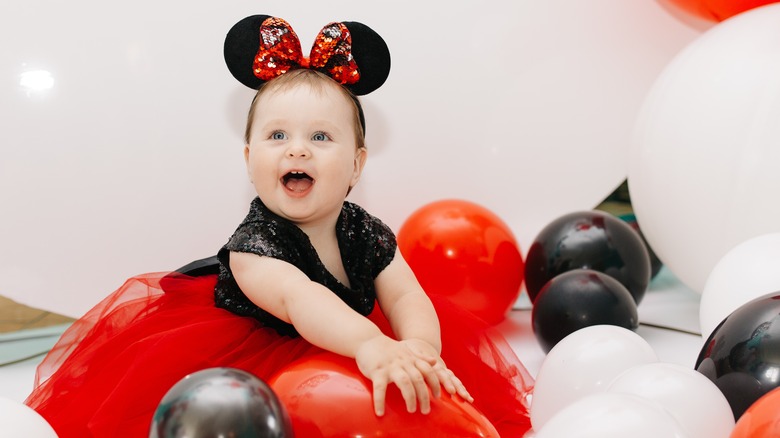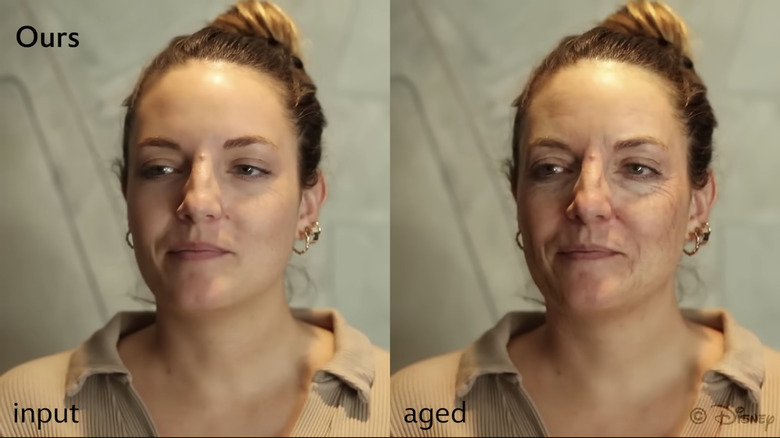Disney Is Changing Actors' Ages - Here's How
Whether it's face or body filters in social media apps, deep fakes, or visual effects in TV and movies, chances are you've come across a video or two depicting someone with a digitally-altered face. Not unlike what we saw in "Rogue One" with Grand Moff Tarkin, or the final episode of the second season in "The Mandalorian," special effects are used to adjust the appearance of an actor's age rather than make them look like someone else entirely — with mixed results.
De-aging, and by extension aging-up, are becoming an increasingly common alternative to practical makeup effects. However, digital face alteration (particularly in moving video) can be a very time-consuming process, as it often requires artists to alter faces one frame at a time. What Disney is doing is developing tools to both reduce the workload and expedite the process, while theoretically making it look less "Uncanny Valley" at the same time.
What's behind the Mouse's magic?
It's all made possible thanks to FRAN (via Disney Research|Studios) — short for Face Re-Aging Network — a neural network designed (and "trained") to digitally adjust a subject's visual appearance. It's something Disney researchers are calling "... the first practical, fully-automatic, and production-ready method for re-aging faces in video images."
Re-aging someone's face in a video isn't a particularly rare occurrence these days, but it's much less common to find examples that are convincing, especially ones that don't require a lot of work to achieve. What FRAN does is automate the process to provide a sort of rough draft depicting the subject as older or younger, at which point visual effects artists can come in and touch up the rough edges.
As interesting as Disney's new digital age-adjustment approach is, it's meant as more of a tool to streamline the process rather than as a full on replacement. So don't expect to be using it (or anything like it) as an app filter anytime soon.

